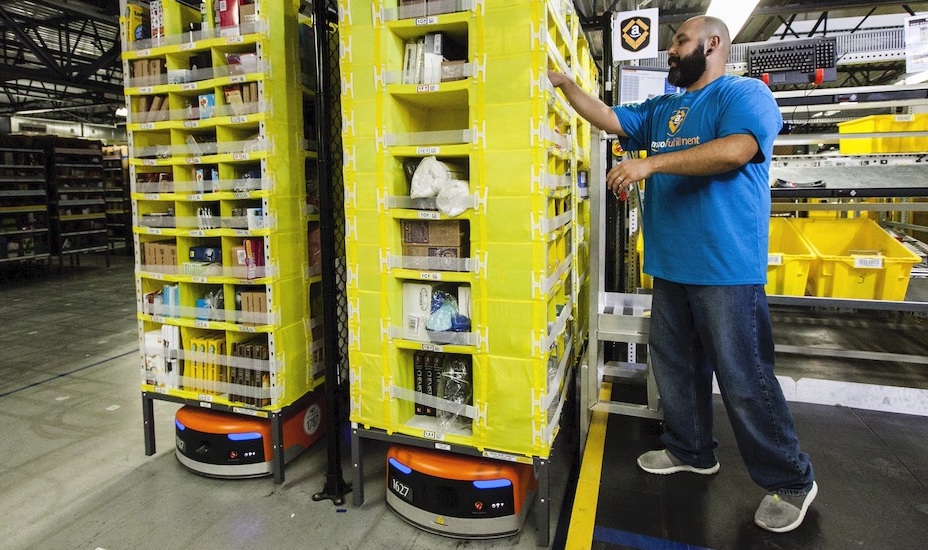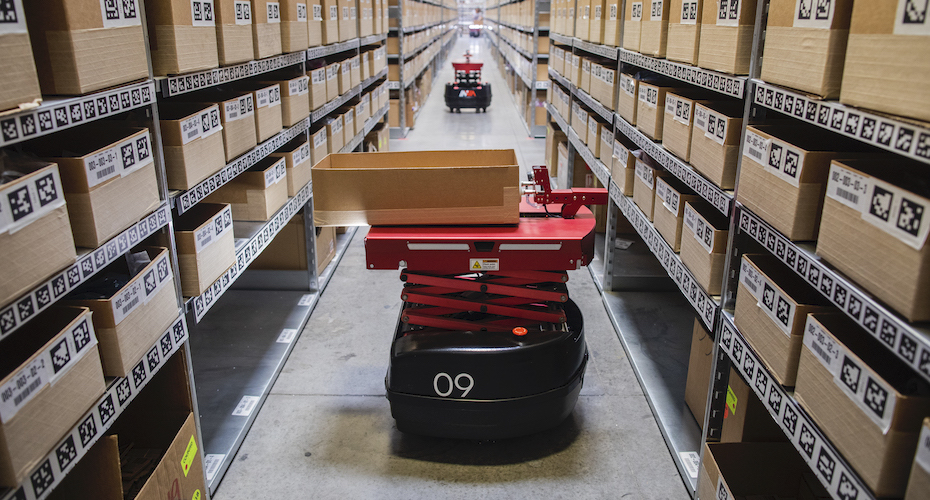
Congratulations! You’ve reached the final installment in our series on the history of warehouses. While some may see warehouses as gigantic, impersonal structures filled with rows of random goods, we hold a different view: warehouses have been the heartbeat of global trade and commerce for thousands of years and were at the epicenter of the e-commerce revolution that transformed how the world shops.
Part I and Part II covered a lot of history in a short amount of time—a whirlwind tour of Ancient Rome, Industrial Britain, America’s expansion and the birth of mechanized manufacturing. And throughout the centuries, warehouses grew in size, number, and importance as supply chains stretched around the world.
The Swinging 60s: Factories Get Their Groove On
Manufacturing really hit its stride during the 1960s and early 1970s. As automation began working its way onto factory floors, the sheer number and variety of consumer goods produced around the world skyrocketed, and so did the need for more warehouse space.
At the same time, advancements in technology, transportation, and communications began to disrupt business as usual. Credit cards were becoming mainstream, the first handheld cellular phone call was made in New York City, and a company called ”Federal Express” made its first overnight package deliveries. It was the early days of the “On-Demand Economy” and the start of a shift in consumer behavior that necessitated a complementary shift in the way goods were distributed.
The Go-Go Eighties: Catalogs Give Way to Computers
The 1980s were a time of excess: music videos, flashy sneakers, “Miami Vice” and the “Material Girl.” And while the catalog shopping boom started by Sears, Roebuck & Co. a century earlier still had some life left in it, companies like L.L. Bean and Lands’ End were finding customers wanted faster shipping options, including express delivery for those willing to pay more. This new need for speed forced companies to take a long, hard look at how they operated. How could they get more products out to customers in a shorter amount of time when simply adding more workers wasn’t getting the job done?
It was clear that investments in new technologies would be required to help track inventory coming into and going out of the warehouse and to help automate as many steps in the order and fulfillment process as possible. And partnerships with shipping companies like FedEx and UPS were essential.
At the same time, personal computers were gaining a foothold in Corporate America and at home. It was only a matter of time before the two worlds converged.
Dot.com Dominance: The World at Your Fingertips
If you had access to a computer, the 1990s were an exciting time: word processors and spreadsheets made your job easier, online services let you socialize without leaving your home, and computer games meant you’d never have to pump quarters into an arcade game ever again.
It also meant witnessing the rise of e-commerce, as computer hardware and software companies took their first tentative steps online. Welcome screens were text-heavy and order processing clunky, but the foundations to sell and ship products directly from the warhouse to consumers were there when a former Wall Street whiz kid named Jeff Bezos decided to drive to Seattle and launch an online bookstore offering more than 1 million titles.
The Amazon Effect
Most people know the story of Amazon by now: the company that would eventually drive the big brick and mortar bookstore chains out of business launched in the mid-90s, billing itself as the “Earth’s biggest bookstore.” In the early days, Amazon cut deals with book distributors and wholesalers to fill its orders, but as its lineup of products swelled, it built two large fulfillment warehouses (one on each coast) to house its ever-expanding inventory. From there, a network of more than 100 fulfillment centers would spring up across the U.S. as the company sought to stockpile its goods closest to its most lucrative customer markets in the wealthiest and most populated states in the country.

Amazon plowed billions of dollars into its rapid expansion and its warehouses, building state-of-the-art facilities with carousels, conveyors, and any means of automation available at the time to get orders out the door as quickly as possible. It also hired thousands of warehouse workers who walked 12 to 14 miles a day on average to pick products off warehouse shelves, although finding and retaining qualified workers was becoming a challenge.
The Robotics Revolution
Amazon’s phenomenal growth rate pushed retail giants like Walmart and Target to make substantial investments in their own e-commerce operations and warehouse networks or risk being left in the dust. It also created a new market for companies making software and hardware specifically for warehouses—including a robotics startup named Kiva Systems, which had come up with a squat robot that could go find a shelf tower full of goods in a warehouse, lift it off the ground, and deliver it to a person assembling online orders for shipping.

Kiva launched in the early 2000s and landed customers like Crate & Barrel and Gap, as well as Zappos.com and Diapers.com—both of which were bought up by Amazon. In fact, Amazon liked Kiva’s robots so much, it bought the entire company in 2012, depriving its competitors access to the game-changing technology in the process.
But nature, of course, abhors a vacuum, and new robotics and automation startups from Boston to Los Angeles began to fill the void created by Kiva’s acquisition. At the same time, fulfillment-for-hire companies known as third-party logistics providers (3PLs) were offering regional and local storage and shipping services to businesses looking to create an online presence.
It was, as they say, a match made in heaven.

From robots that follow workers around as they retrieve goods to next-generation autonomous mobile robots that go out into the warehouse and bring goods back to the picking station, robotics and automation companies have helped level the playing field for businesses looking to compete with the big dogs in a tight labor market
And just as the warehouse is the heartbeat of commerce and online shopping, robotics and automation are now the heartbeat of the warehouse.